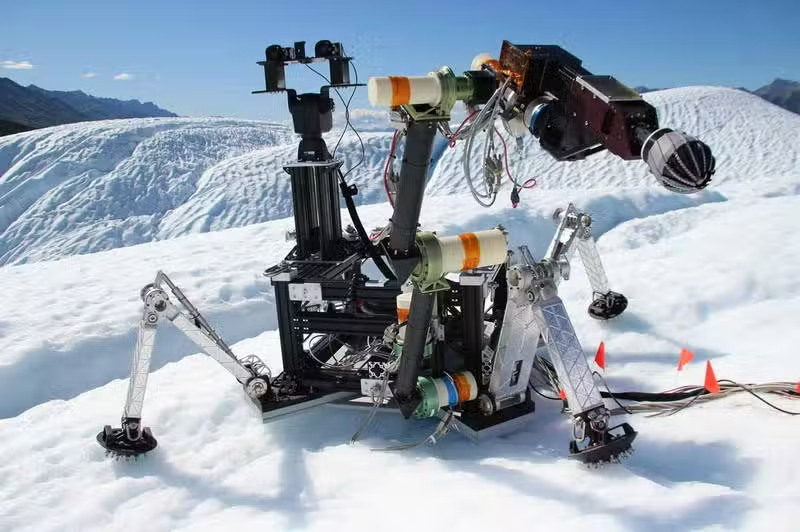Europe’s Exploration Robot: Successful Trials on Alaska’s Matanuska Glacier

The Matanuska Glacier in Alaska might not strike you as a glamorous location, but for NASA, it has become the ideal testing ground. Amid freezing temperatures and harsh conditions, engineers have been trialing an exploratory robot that could revolutionize our understanding of life beyond Earth.
This isn’t just any rover—it’s a fully integrated system designed to drill, analyze, and make autonomous decisions. Its ultimate destination? Europa, the icy moon of Jupiter believed to harbor a vast ocean beneath its thick frozen crust.
An Explorer Robot That “Thinks” Independently
This robot doesn’t rely on commands from Earth—that was the whole point. NASA designed it specifically for exploring Europa’s unique environment. The team developed autonomous control software paired with drilling hardware to penetrate the moon’s icy surface and search for samples that might contain signs of life.
The robot’s design is distinctive: it has four sturdy legs, two articulated arms, and a “head” equipped with stereo cameras. It resembles a giant mechanical insect, but every part has a precise function. The cameras gather visual data of the surroundings, while the arms handle tools for digging, extracting, and collecting samples.
Why Alaska Is the Perfect Testing Site
The choice of the Matanuska Glacier wasn’t random. Tests focused not only on individual instruments but also on how the entire integrated system performed in a real-world setting. Alaska’s conditions closely replicate those the rover will face on Europa: thick ice, frigid polar temperatures, and rugged terrain.
During early tests in July 2022, the robot autonomously gathered samples from various locations featuring different slopes, ice depths, and uneven gravel distribution. More recently, it surpassed expectations by demonstrating full end-to-end autonomous sampling alongside a lander module simulator. (The lander module, named Olaf, remains at NASA’s facility—an image reconstruction appears on this article’s cover.)

Autonomy Is Crucial
On Europa, there’s no technical support line to call. The vast distance from Earth creates long communication delays, and the harsh environment demands immediate, independent decisions. José Bowkett, lead author of the study published in Robotics Science, highlights that the lander module model had significantly greater autonomy than current Mars rovers and landers—primarily due to limited mission time and the high energy costs of Earth communications.
Europa: A Prime Target
Europa stands out as one of the most promising locations to search for life within our solar system. Beneath its frozen shell lies an ocean containing more water than all of Earth’s oceans combined. This subsurface ocean could potentially support life of many forms, from microbes to more complex organisms.
The exploratory robot must drill about 10 centimeters beneath the surface, where the ocean’s complex chemistry is shielded from harmful radiation in Jupiter’s space environment.
As we discussed in our previous article about the Europa Clipper mission, set to arrive in 2030, that mission will only fly over the moon’s surface. An explorer robot like the one tested in Alaska represents the crucial next step: actually landing on that alien world and seeking its hidden biological secrets.
These successful tests in Alaska bring us closer than ever to achieving this extraordinary goal.
Read the original article on: Futuro Prossimo
Read more: How Light Travels Across the Universe Without Losing Energy











Leave a Reply